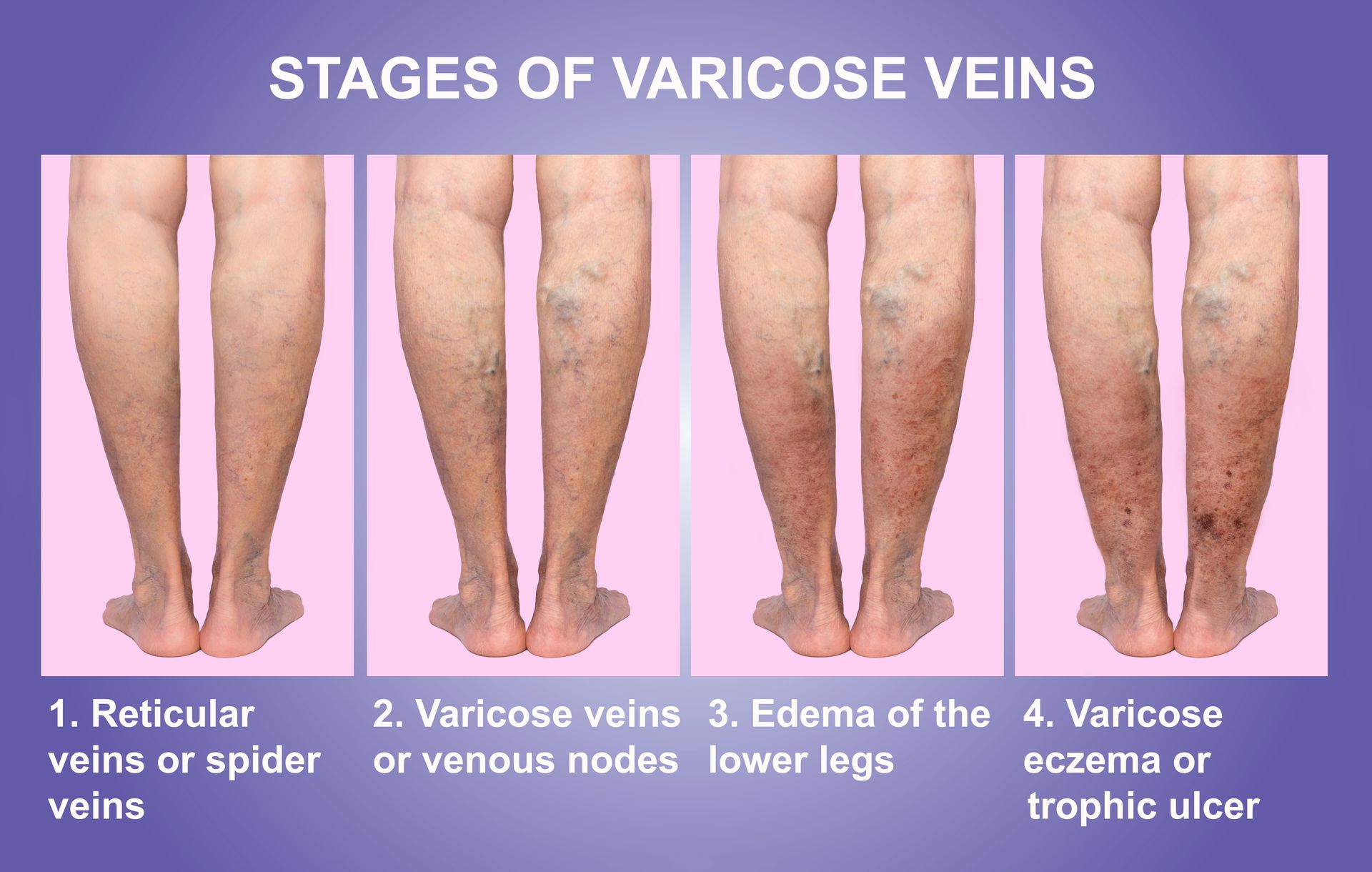Signs & Symptoms of Vein Disease
Signs/Symptoms of Vein Disease
Veins play a crucial role in the body's circulation, carrying oxygenated blood to the organs, including the legs. However, leg veins face the challenge of gravity, requiring two key mechanisms to propel blood upwards and prevent its backward flow. The foot and calf muscles act as pumps, aiding blood flow as people move. Additionally, one-way valves in leg veins prevent blood from descending when gravity pulls it down. Vein disease often results from valve failure.
The legs contain three types of veins: deep, superficial, and perforating. The deep veins, protected within the leg muscles, handle 90% of blood flow. Superficial veins, located under the skin, manage the remaining 10%. Perforating veins, around 150 in number, connect these systems by directing blood from the superficial veins to the deep veins.
Notably, the main superficial veins are the saphenous veins—the great saphenous vein (GSV) and the small saphenous vein (SSV). The GSV, often affected due to its length, collects blood from the foot's interior and travels up the leg to the groin. The SSV gathers blood from the outer foot, ascending along the calf to join the deep veins. Issues with these veins' valves contribute to significant vein disease, addressable through modern outpatient treatments offered at ERVC.

Interested in our services?
We’re here to help!
We want to know your needs exactly so that we can provide the perfect solution. Schedule a consultation and explore personalized treatment options.



